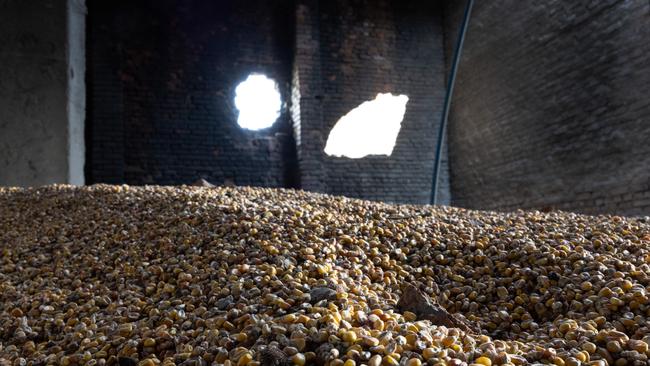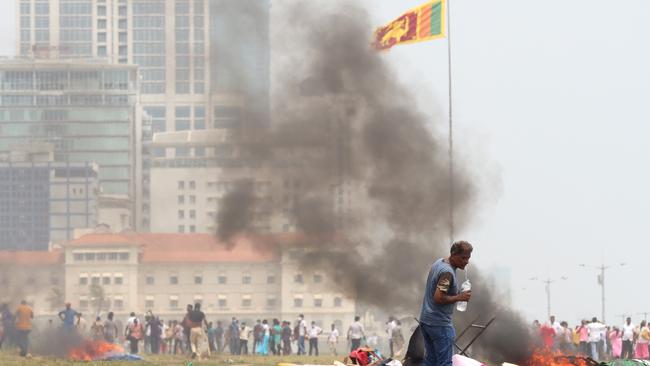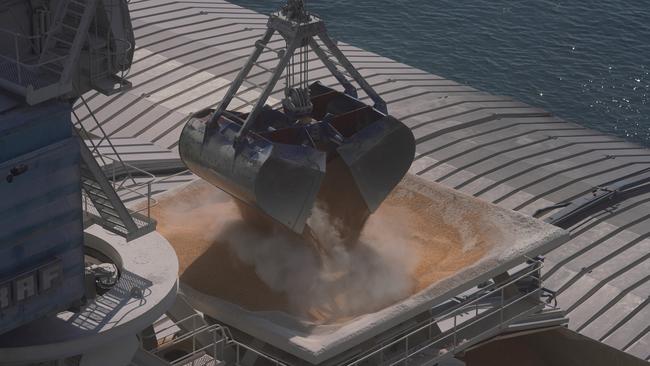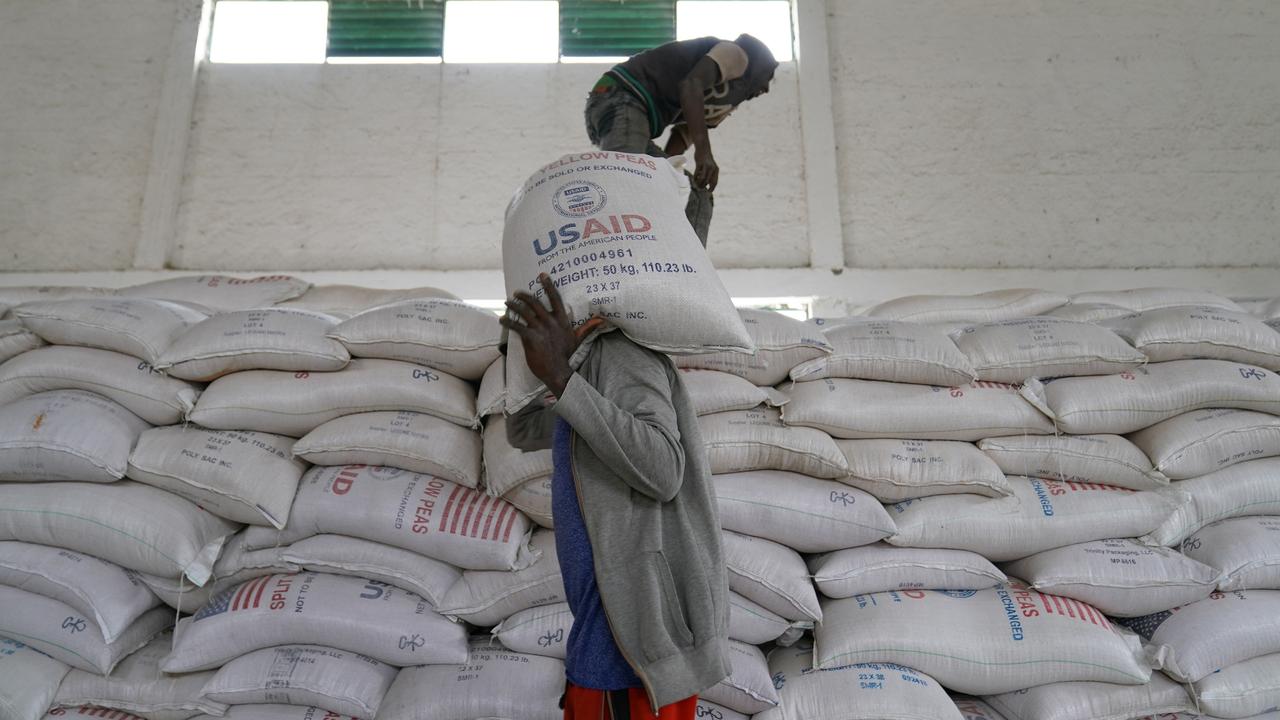Rising food prices roil developing world
War in Ukraine is exacerbating pandemic supply-chain woes and worse-than-expected harvests around the world.

Soaring food prices are triggering shortages and protests across the developing world as disruption from the Ukraine war adds to existing strains on global supplies of grains, meat and other foodstuffs.
India on Saturday invoked a rare ban on wheat exports to help tame domestic prices, a move likely to exacerbate global strains. The country is the world’s second-largest wheat grower, behind China. Late last month, Indonesia halted the export of certain types of palm oil in an effort to lower soaring prices of cooking oil at home.
Rising prices helped stoke the violent unrest that led to the resignation of Sri Lanka’s prime minister earlier this week and have fanned more peaceful protests in the Middle East. In parts of Africa, millers have run out of wheat. Consumers are skimping on food items once considered everyday staples and substituting cheaper products.
On Thursday, the head of the United Nations World Food Program said the globe faces outright food shortages as early as next year if Ukrainian seaports remain blocked by Russia.
Food prices had been heading higher since last year, hit by supply-chain disruptions related to the Covid-19 pandemic and poor harvests in the US, Canada and other countries. Then, Russia’s invasion of Ukraine choked off a significant slice of sunflower oil, wheat and corn exports, while disrupting the flow of fertilisers needed to increase crop yields. Ukraine is responsible for 10% of global wheat exports, 14% of corn exports and roughly half of the world’s sunflower oil, according to the US Department of Agriculture.
Russia’s massive grain exports also risk being affected by sanctions and insecurity in the Black Sea. Moscow has stopped exporting fertiliser.

The executive director of the World Food Program, David Beasley, told a conference in New York that Ukrainian ports must reopen before the harvesting season, which begins in earnest in mid-June, to prevent shortages next year. Some 300 million people could face “crisis levels of acute food insecurity in the coming months,” he said earlier in written US Senate testimony.
Even in the world’s richest nations, higher food prices are causing strain. Norwegian food-bank charity Matsentralen Norge says it has distributed 28% more food compared with the same period in 2021, a year that in itself saw sharply higher demand. US grocery prices in April were up 10.8% over the past 12 months, the largest annual increase since November 1980, according to the Labor Department.
UK supermarkets have rationed sunflower oil. John Allan, chairman of British grocery giant Tesco, told the BBC this week that the country is seeing “real food poverty” for the first time in a generation.
But it is in the world’s poorest countries where the effects of the Ukraine conflict on food prices are being felt most sharply.
A drought is ravishing northern Kenya. But local farmers asked Craig Redmond, a senior official at Mercy Corps, a non-profit that helps distribute aid, about the war in Ukraine during a recent visit there.
“I have never seen a situation where people see so very clearly geopolitics’ impact” on food supplies, he said.
The war is happening at a time when other big producers are suffering their own challenges. A searing heatwave and lack of rainfall in India has forced it to downgrade its wheat production estimate by almost 6%, after five years of bumper harvests.
India is a crucial supplier of wheat to its neighbours. Afghanistan recently received large consignments of wheat from India on humanitarian grounds. Bangladesh is another big importer of Indian wheat. Prices, meanwhile, have soared inside the country, helping trigger Saturday’s export restrictions. “The food security of India, neighbouring and other vulnerable countries is at risk,” said India’s Directorate General of Foreign Trade in a notice explaining the ban.
Poor weather has delayed spring planting in key parts of the US Farm Belt, threatening to cut into crop yields if farmers don’t make quick progress.
The USDA in a forecast on Thursday said it expects world wheat stockpiles in the 2022-23 season to fall 5% to 267 million tons from the season before, marking a six-year low.
Futures prices for wheat traded on the Chicago Board of Trade have climbed more than 50% since the start of the year, while prices for corn are up more than 30% and soybeans have risen more than 20%. In April, the UN Food and Agriculture Organisation’s food index was up 30% from the same month last year and 60% since 2019, before the global pandemic hit farm production and supply chains.

That is hurting people like Veeramuththu Mangaleswary, a 49-year-old single mother living in the outskirts of Colombo, Sri Lanka’s capital. Ms Mangaleswary said she now struggles to afford a tea bun, a sweet bread roll popular in the country, for her teenage daughter’s breakfast.
“We’re on our last legs,” she said.
Sri Lanka relies on Ukraine and Russia for 45% of its wheat. Food price rises have heaped further pressure on an economy laid low by the loss of tourism revenue through the pandemic, high levels of foreign debt and lower tax revenue. As with many other developing economies, a fall in the value of the local currency is also crimping buying power on global food markets.
Mahinda Rajapaksa, the country’s prime minister, resigned on Monday following violent clashes between his supporters and opponents in Colombo.
Iran, meanwhile, has faced protests in recent days after sudden price increases on staples such as sugar and cooking oil. The government has said it would eliminate subsidies on wheat and flour for bakeries to curb smuggling of cheap food items out of the country and enhance food security. Agriculture Minister Seyyed Javad Sadatinejad has partly blamed the Ukraine war for higher prices.
Across Africa, severe weather has disrupted local harvests. Food prices on the continent were already at a 10-year high before the invasion.
For Cameroon, one of Africa’s top wheat importers, Covid-19 lockdowns and violence by Boko Haram, a Nigerian terrorist group active in several neighbouring countries, have cut local production in half, according to the country’s trade ministry. Meanwhile, the country has suffered a 60% slump in wheat imports since Russia invaded Ukraine. In February, the country’s millers body suspended wheat deliveries to bakeries, citing steep prices.
Around half of the 26 million people in the country who consume bread daily no longer have a regular supply, according to the government. A 9-ounce loaf of bread that used to cost the equivalent of 25 US cents now sells for 90 cents.
Countries are scrambling to adapt. Egypt, the world’s largest importer of wheat, is turning to countries from Paraguay to India, to diversify away from Ukraine. The Democratic Republic of Congo is putting millions of dollars into a project to get bakeries in sub-Saharan Africa’s largest nation to switch from wheat to flour made from cassava, a plant with starchy roots readily available across the country.
In homes around the world, people are cutting back on staples or substituting them with cheaper alternatives. In Brazil, the cost of carrots and tomatoes has more than doubled from this time last year, while roast coffee is up nearly 70%.
Maria do Socorro da Costa Alves, a 65-year-old retiree in São Paulo, said she is forgetting what meat tastes like. Not long ago, Ms Alves was eating meat at least once a week. With food prices skyrocketing, she is only buying beef once a month.
“First came the pandemic and now the war,” said Ms. Alves, as she shopped for bargains at a local supermarket. “Sometimes we can’t afford the basics, and I fear things may get even worse.”
Jesse Newman, Luciana Magalhaes, Sune Engel Rasmussen, Aresu Eqbali, Ghassan Adnan, Vibhuti Agarwal and Waqar Gillani contributed to this article.
The Wall Street Journal


